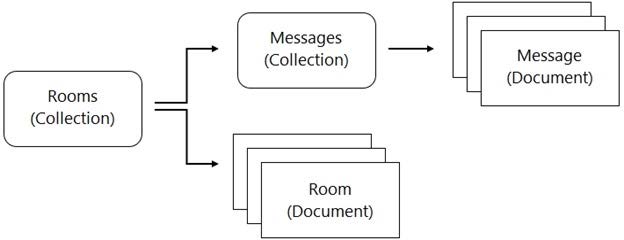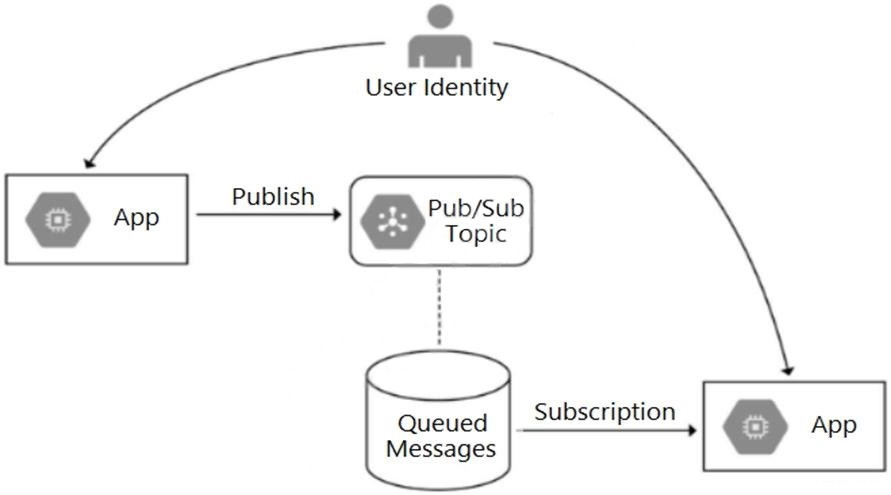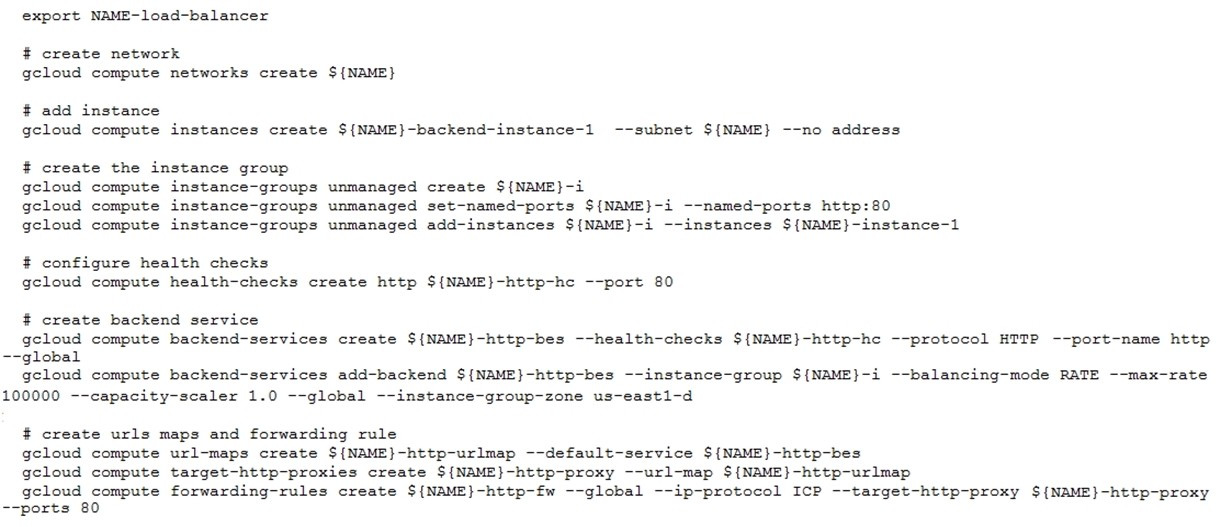PROFESSIONAL-CLOUD-DEVELOPER Online Practice Questions and Answers
In order for HipLocal to store application state and meet their stated business requirements, which database service should they migrate to?
A. Cloud Spanner
B. Cloud Datastore
C. Cloud Memorystore as a cache
D. Separate Cloud SQL clusters for each region
HipLocal wants to improve the resilience of their MySQL deployment, while also meeting their business and technical requirements.
Which configuration should they choose?
A. Use the current single instance MySQL on Compute Engine and several read-only MySQL servers on Compute Engine.
B. Use the current single instance MySQL on Compute Engine, and replicate the data to Cloud SQL in an external master configuration.
C. Replace the current single instance MySQL instance with Cloud SQL, and configure high availability.
D. Replace the current single instance MySQL instance with Cloud SQL, and Google provides redundancy without further configuration.
For this question, refer to the HipLocal case study.
A recent security audit discovers that HipLocal's database credentials for their Compute Engine-hosted MySQL databases are stored in plain text on persistent disks. HipLocal needs to reduce the risk of these credentials being stolen. What should they do?
A. Create a service account and download its key. Use the key to authenticate to Cloud Key Management Service (KMS) to obtain the database credentials.
B. Create a service account and download its key. Use the key to authenticate to Cloud Key Management Service (KMS) to obtain a key used to decrypt the database credentials.
C. Create a service account and grant it the roles/iam.serviceAccountUser role. Impersonate as this account and authenticate using the Cloud SQL Proxy.
D. Grant the roles/secretmanager.secretAccessor role to the Compute Engine service account. Store and access the database credentials with the Secret Manager API.
You are designing a chat room application that will host multiple rooms and retain the message history for each room. You have selected Firestore as your database. How should you represent the data in Firestore?
A. Create a collection for the rooms. For each room, create a document that lists the contents of the messages

B. Create a collection for the rooms. For each room, create a collection that contains a document for each message

C. Create a collection for the rooms. For each room, create a document that contains a collection for documents, each of which contains a message.

D. Create a collection for the rooms, and create a document for each room. Create a separate collection for messages, with one document per message. Each room's document contains a list of references to the messages.

Your application is logging to Stackdriver. You want to get the count of all requests on all /api/alpha/*
endpoints.
What should you do?
A. Add a Stackdriver counter metric for path:/api/alpha/.
B. Add a Stackdriver counter metric for endpoint:/api/alpha/*.
C. Export the logs to Cloud Storage and count lines matching /api/alphA.
D. Export the logs to Cloud Pub/Sub and count lines matching /api/alphA.
Your team is developing an application in Google Cloud that executes with user identities maintained by Cloud Identity. Each of your application's users will have an associated Pub/Sub topic to which messages are published, and a Pub/Sub subscription where the same user will retrieve published messages. You need to ensure that only authorized users can publish and subscribe to their own specific Pub/Sub topic and subscription. What should you do?

A. Bind the user identity to the pubsub.publisher and pubsub.subscriber roles at the resource level.
B. Grant the user identity the pubsub.publisher and pubsub.subscriber roles at the project level.
C. Grant the user identity a custom role that contains the pubsub.topics.create and pubsub.subscriptions.create permissions.
D. Configure the application to run as a service account that has the pubsub.publisher and pubsub.subscriber roles.
Your existing application keeps user state information in a single MySQL database. This state information is
very user-specific and depends heavily on how long a user has been using an application.
The MySQL
database is causing challenges to maintain and enhance the schema for various users.
Which storage option should you choose?
A. Cloud SQL
B. Cloud Storage
C. Cloud Spanner
D. Cloud Datastore/Firestore
You have deployed an HTTP(s) Load Balancer with the gcloud commands shown below.

Health checks to port 80 on the Compute Engine virtual machine instance are failing and no traffic is sent to your instances. You want to resolve the problem. Which commands should you run?
A. gcloud compute instances add-access-config ${NAME}-backend-instance-1
B. gcloud compute instances add-tags ${NAME}-backend-instance-1 --tags http-server
C. gcloud compute firewall-rules create allow-lb --network load-balancer --allow tcp --source-ranges 130.211.0.0/22,35.191.0.0/16 --direction INGRESS
D. gcloud compute firewall-rules create allow-lb --network load-balancer --allow tcp --destination-ranges 130.211.0.0/22,35.191.0.0/16 --direction EGRESS
You want to use the Stackdriver Logging Agent to send an application's log file to Stackdriver from a Compute Engine virtual machine instance.
After installing the Stackdriver Logging Agent, what should you do first?
A. Enable the Error Reporting API on the project.
B. Grant the instance full access to all Cloud APIs.
C. Configure the application log file as a custom source.
D. Create a Stackdriver Logs Export Sink with a filter that matches the application's log entries.
You are writing a single-page web application with a user-interface that communicates with a third-party API
for content using XMLHttpRequest. The data displayed on the UI by the API results is less critical than other data displayed on the same web page, so it is acceptable for some requests to not have the API data
displayed in the UI. However, calls made to the API should not delay rendering of other parts of the user
interface. You want your application to perform well when the API response is an error or a timeout.
What should you do?
A. Set the asynchronous option for your requests to the API to false and omit the widget displaying the API results when a timeout or error is encountered.
B. Set the asynchronous option for your request to the API to true and omit the widget displaying the API results when a timeout or error is encountered.
C. Catch timeout or error exceptions from the API call and keep trying with exponential backoff until the API response is successful.
D. Catch timeout or error exceptions from the API call and display the error response in the UI widget.
You recently deployed a Go application on Google Kubernetes Engine (GKE). The operations team has noticed that the application's CPU usage is high even when there is low production traffic. The operations team has asked you to optimize your application's CPU resource consumption. You want to determine which Go functions consume the largest amount of CPU. What should you do?
A. Deploy a Fluent Bit daemonset on the GKE cluster to log data in Cloud Logging. Analyze the logs to get insights into your application code's performance.
B. Create a custom dashboard in Cloud Monitoring to evaluate the CPU performance metrics of your application.
C. Connect to your GKE nodes using SSH. Run the top command on the shell to extract the CPU utilization of your application.
D. Modify your Go application to capture profiling data. Analyze the CPU metrics of your application in flame graphs in Profiler.
You are designing a schema for a Cloud Spanner customer database. You want to store a phone number array field in a customer table. You also want to allow users to search customers by phone number. How should you design this schema?
A. Create a table named Customers. Add an Array field in a table that will hold phone numbers for the customer.
B. Create a table named Customers. Create a table named Phones. Add a CustomerId field in the Phones table to find the CustomerId from a phone number.
C. Create a table named Customers. Add an Array field in a table that will hold phone numbers for the customer. Create a secondary index on the Array field.
D. Create a table named Customers as a parent table. Create a table named Phones, and interleave this table into the Customer table. Create an index on the phone number field in the Phones table.
You need to deploy an internet-facing microservices application to Google Kubernetes Engine (GKE). You want to validate new features using the A/B testing method. You have the following requirements for deploying new container image releases
?There is no downtime when new container images are deployed.
?New production releases are tested and verified using a subset of production users.
What should you do?
A. 1 Configure your Cl/CD pipeline to update the Deployment manifest file by replacing the container version with the latest version. 2 Recreate the Pods in your cluster by applying the Deployment manifest file. 3 Validate the application's performance by comparing its functionality with the previous release version and roll back if an issue arises.
B. 1 install the Anthos Service Mesh on your GKE cluster. 2 Create two Deployments on the GKE cluster and label them with different version names. 3 Create a VirtualService with a routing rule to send a small percentage of traffic to the Deployment that references the new version of the application.
C. 1 Create a second namespace on GKE for the new release version. 2 Create a Deployment configuration for the second namespace with the desired number of Pods. 3 Deploy new container versions in the second namespace. 4 Update the ingress configuration to route traffic to the namespace with the new container versions.
D. 1. Implement a rolling update pattern by replacing the Pods gradually with the new release versify. 2 Validate the application's performance for the new subset of users during the rollout and roll back if an issue arises.
You have an application that uses an HTTP Cloud Function to process user activity from both desktop browser and mobile application clients. This function will serve as the endpoint for all metric submissions using HTTP POST.
Due to legacy restrictions, the function must be mapped to a domain that is separate from the domain requested by users on web or mobile sessions. The domain for the Cloud Function is https://fn.example.com. Desktop and mobile clients
use the domain https://www.example.com. You need to add a header to the function's HTTP response so that only those browser and mobile sessions can submit metrics to the Cloud Function.
Which response header should you add?
A. Access-Control-Allow-Origin: *
B. Access-Control-Allow-Origin: https://*.example.com
C. Access-Control-Allow-Origin: https://fn.example.com
D. Access-Control-Allow-origin: https://www.example.com
You are developing a marquee stateless web application that will run on Google Cloud. The rate of the incoming user traffic is expected to be unpredictable, with no traffic on some days and large spikes on other days. You need the application to automatically scale up and down, and you need to minimize the cost associated with running the application. What should you do?
A. Build the application in Python with Firestore as the database. Deploy the application to Cloud Run.
B. Build the application in C# with Firestore as the database. Deploy the application to App Engine flexible environment.
C. Build the application in Python with CloudSQL as the database. Deploy the application to App Engine standard environment.
D. Build the application in Python with Firestore as the database. Deploy the application to a Compute Engine managed instance group with autoscaling.
